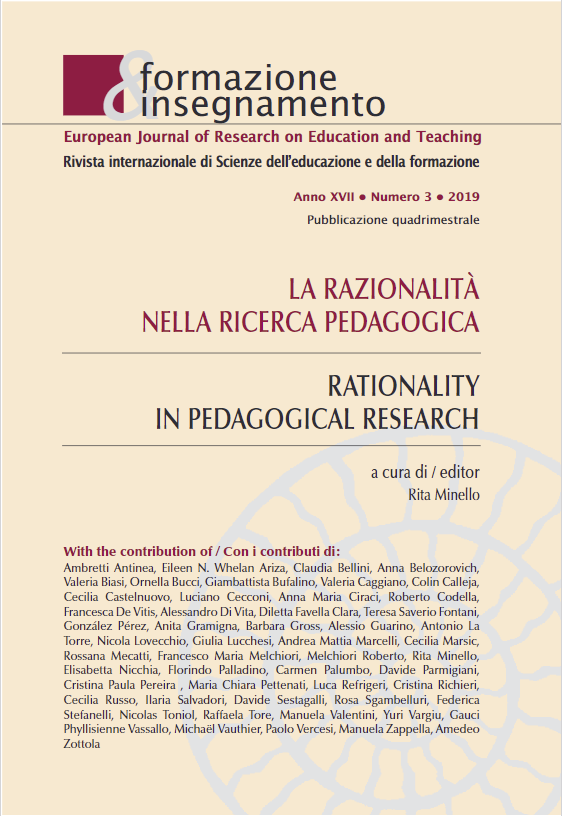Mixed methods in the educational research: what are they? Where do they come from? Where are they going? Origins and future directions
DOI:
https://doi.org/10.7346/-fei-XVII-03-19_16Abstract
The aim of this paper is to consider the Mixed Method research, the reasons for its success and dissemination in the educational field where the hybridizations of quantitative and qualitative approaches seem to better show the complexity of reality than a mono-method vision. The several mixed research designs are characterized by flexibility and methodological integration that become a peculiar feature of the Mixed Method approaches, for which it has not been provided a unique and official definition yet. But in this lackness, we can see the distinctive and fruitful feature of the mixed approaches which should not be used indiscriminately but adopted only when necessary to answer the research questions, according to a pragmatic perspective. The dialectical pluralism can therefore replace the rigid paradigmatic stance, paving the way for the development directions of this field of research that is experimenting an integrative way from a phase of operationalism, triangulation of methods and combination of methodologies.
Downloads
Published
How to Cite
Issue
Section
License
Copyright (c) 2019 Pensa MultiMedia

This work is licensed under a Creative Commons Attribution 4.0 International License.
Formazione & insegnamento is distributed under Attribution 4.0 International (CC BY 4.0).
For further details, please refer to our Repository & Archiving Policy, as well as our Copyright & Licensing Terms.





